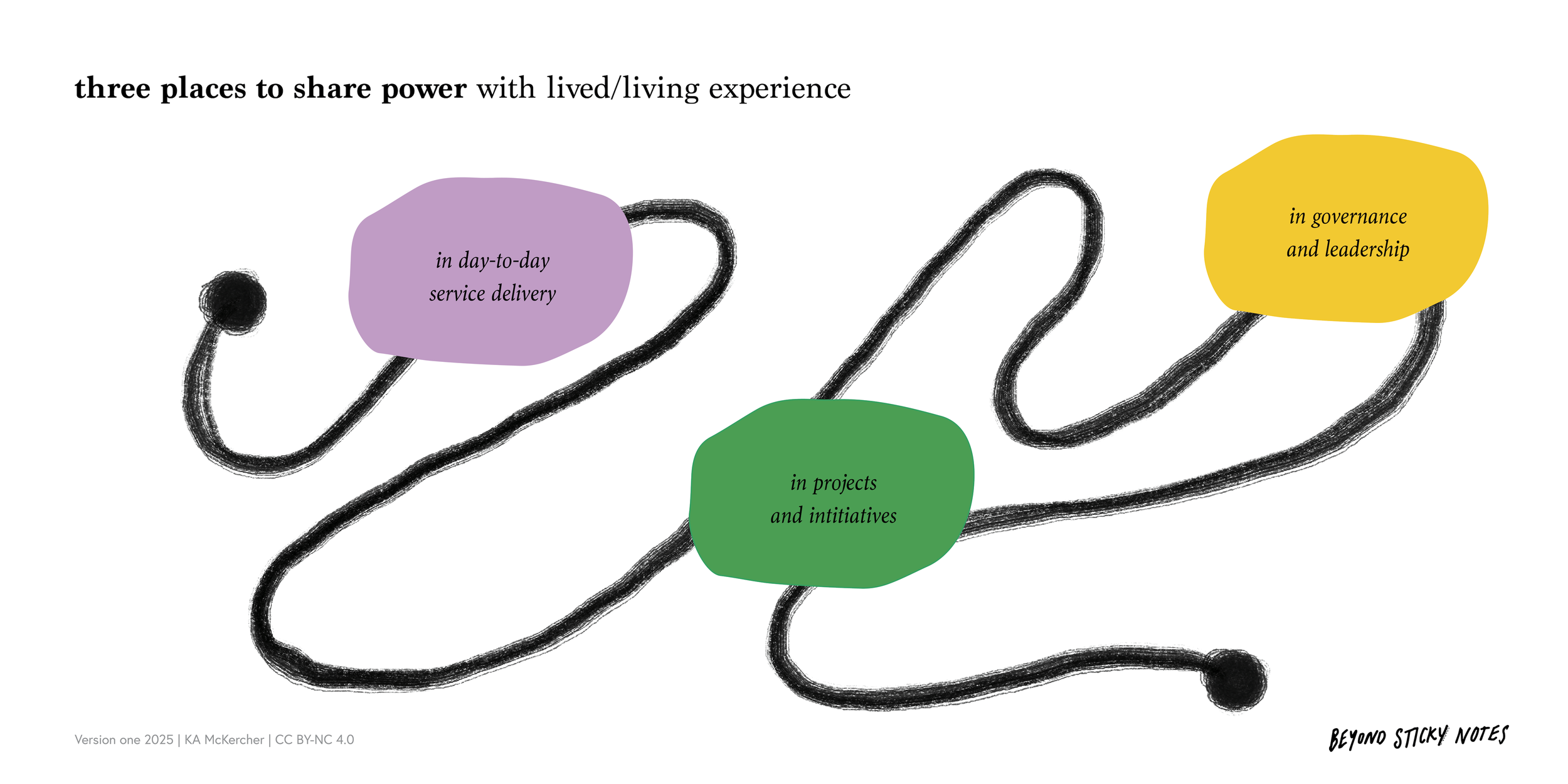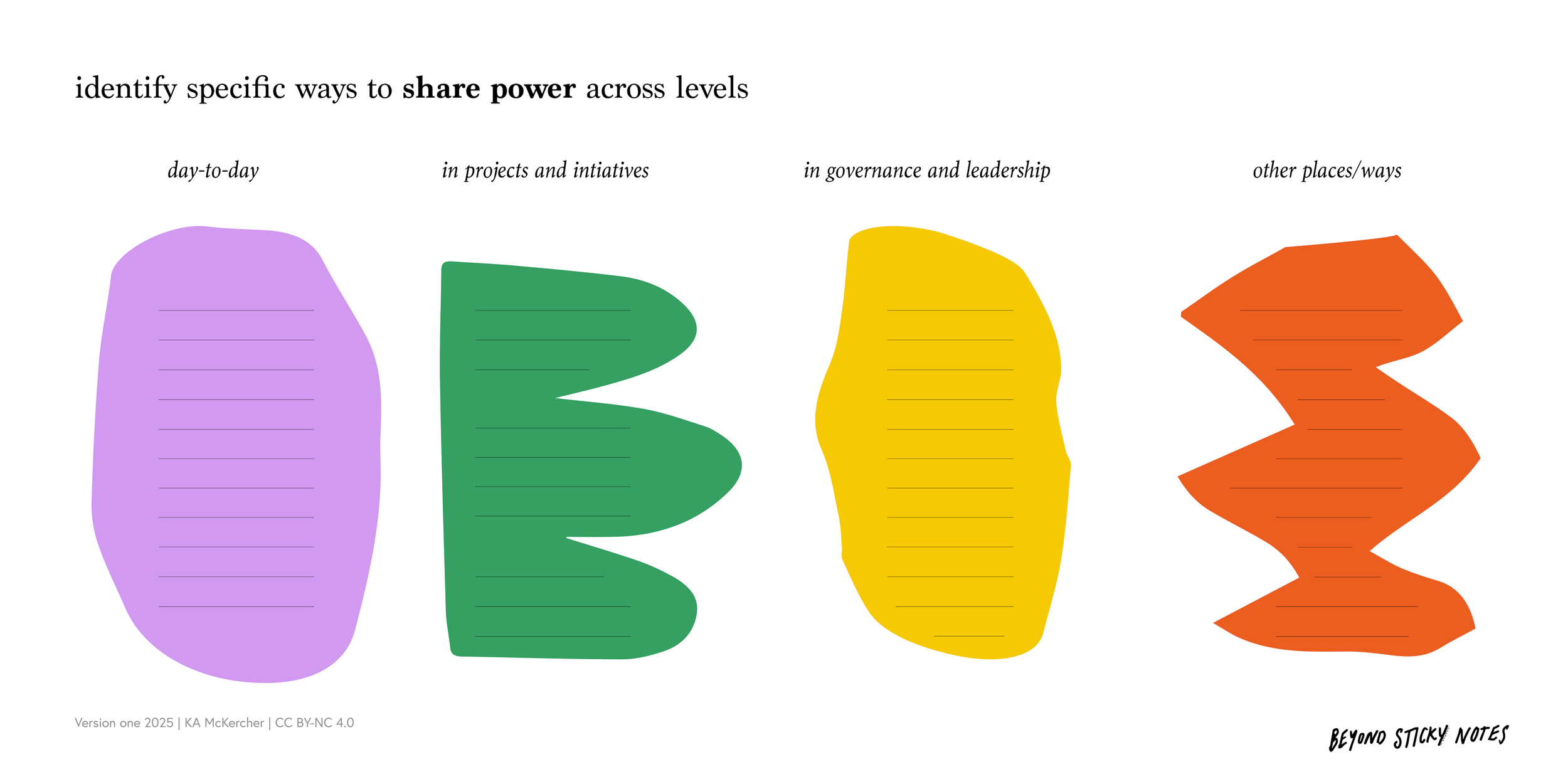three ways to share power
by KA McKercher
Projects aren't the only place share power with people with lived/living experience.
If we focus only on projects, we might overlook opportunities to make lasting changes in day-to-day service delivery, leadership, and governance.
So, we can continue our projects and expand our focus to have bigger impact.
Here's a simple framework to help. You can use it with attribution.
a few examples 📣
We can think about opportunities for power sharing in:
day-to-day service delivery (e.g., health, social care, education)
resourcing peer practitioners and community-led alternatives
doing shared care planning, goal setting or co-writing case notes
giving choices in appointment locations, sharing what to expect
re-thinking our role as 'experts'
giving choices in the service environment (e.g. lower lighting, doors open/closed)
enabling more control over personal data
projects (e.g., design, research, policy, built environment, evaluation)
co-facilitating between lived and technical expertise
doing peer research (see: “Makes you proud to be black eh?”: Reflections on meaningful Indigenous research participation)
co-presenting findings and projects
co-creating and co-analysing evaluations
sharing resources, skills, benefits and risks
governance and leadership (e.g., across projects, organisations, and systems)
deciding together on strategy, funding, policy, and reform
ensuring equal representation of lived and technical experience
challenging ideas about evidence and expertise (see: Evidence for innovation)
... and, in many more ways.
your turn ✍🏼
Sharing power in many ways drives change. What examples have you seen?
Here's a print-out for you 🖨️
✨ this framework is inspired by:
the obligations laid out in Standard Two: Partnering with consumers within the Australian National Safety Quality Health Standards (NSQHS)
my noticing where standalone co-design and co-production projects fall short of impact and how many co-design projects are governed by people without lived experience (or, where there are so few people with lived experience it can be hard to speak up)
a desire to work trauma-responsively, having choice and control in big and small ways


